Research on the Effect of Working Memory on Complexity, Accuracy and Fluency of Second Language Writing: Evidence from Theoretical Models and Empirical Studies
DOI: 10.23977/infkm.2025.060116 | Downloads: 11 | Views: 1078
Author(s)
Chuanren Chen 1
Affiliation(s)
1 East China Jiaotong University, Nanchang, Jiangxi, China
Corresponding Author
Chuanren ChenABSTRACT
The relationship between working memory and specific domains of L2 input and output has been a growing research interest in psycholinguistics and SLA. This study begins with different working memory theoretical bases and orientations including the multicomponent WM model [4,5], the embedded-processes model of working memory [10,11] and the integrated framework of phonological and executive working memory in SLA [49], followed by reviews on significant and representative empirical studies on working memory and L1 & L2 acquisition. Then, some influential writing models are introduced including the updated Hayes-Flower writing mode [22,23,24], working memory model in writing process [31,32], direct and indirect effects model of writing [33] with relevant testing-hypothesis empirical studies on working memory and L2 writing. Finally, research gaps are created to role of working memory in Chinese multilingual learners' writing performance in second and third languages.
KEYWORDS
Working Memory; Second Language Writing; Theoretical ModelsCITE THIS PAPER
Chuanren Chen, Research on the Effect of Working Memory on Complexity, Accuracy and Fluency of Second Language Writing: Evidence from Theoretical Models and Empirical Studies. Information and Knowledge Management (2025) Vol. 6: 118-125. DOI: http://dx.doi.org/10.23977/infkm.2025.060116.
REFERENCES
[1] Adams, E. J., Nguyen, A. T., & Cowan, N. (2018). Theories of Working Memory: Differences in Definition, Degree of Modularity, Role of Attention, and Purpose. Lang Speech Hear Serv Sch, 49(3), 340-355. https://doi:10.1044/2018_LSHSS-17-0114
[2] Baddeley, A. D. (1998). Working memory and distributed vocabulary learning. Applied Psycholinguistics.
[3] Baddeley, A. D. (2000). The episodic buffer: A new component of working memory? Trends in Cognitive Sciences, 4, 417-423.
[4] Baddeley, A. (2003). Working memory and language: an overview. Journal of Communication Disorders, 36(3), 189-208. https://doi:10.1016/s0021-9924(03)00019-4
[5] Baddeley, A. (2012). Working memory: theories, models, and controversies. Annu Rev Psychol, 63, 1-29. https://doi:10.1146/annurev-psych-120710-100422
[6] Baddeley, A. D. (2017). Modularity, working memory and language acquisition. Second Language Research, 33(3), 299-311. https://doi:10.1177/0267658317709852
[7] Baddeley, A. D. & G. Hitch (1974). Working memory.InG.A.Bower (ed.), The psychology of learning and motivation (vol. 8). New York: Academic Press, 47−90.
[8] Bergsleithner, J. M. (2010). Working memory capacity and L2 writing performance. Ciências & Cognição, 15(2).
[9] Caplan, D. (1999). Verbal working memory and sentence comprehension. Behavioral and Brain Science. 22, 77–126.
[10] Cowan, N. (1988) Evolving conceptions of memory storage, selective attention, and their mutual constraints within the human information processing system. Psychological Bulletin 104, 163–191.
[11] Cowan, N. (1999) An embedded-processes model of working memory. In A. Miyake
[12] Shah P. Models of Working Memory: Mechanisms of Active Maintenance and Executive Control (pp. 62–101). Cambridge: Cambridge University Press.
[13] Cowan, N. (2017). The many faces of working memory and short-term storage. Psychon Bull Rev, 24(4), 1158-1170. https://doi:10.3758/s13423-016-1191-6
[14] Daneman M. & Carpenter P. A. (1980). Individual Differences in Working Memory and Reading. Journal of Verbal Learning and Verbal Behavior. (19), 450-466.
[15] Diamond, A. (2013). Executive functions. Annual Review of Psychology, 64, 135–168. doi: 10.1146/annurevpsych-113011-143750
[16] Dufva M. & Voeten, J. M. (1999). Native language literacy and phonological memory as prerequisites for learning English as a foreign language. Applied Psycholinguistics, 20, 329–348.
[17] Ellis, R., & Yuan, F. Y. (2004). The effects of planning on fluency, complexity, and accuracy in second language narrative writing. Studies in Second Language Acquisition, 26, 59-84.
[18] Flower, L. & Hayes, J. R. (1981). A Cognitive Process Theory of Writing. College Composition and Communication, 32 (4). 365-387.
[19] French, L. M., & O'Brien, I. (2008). Phonological memory and children's second language grammar learning. Applied Psycholinguistics, 29(3), 463-487. https://doi:10.1017/s0142716408080211
[20] Gathercole, S. E. (2006). Nonword repetition and word learning: The nature of the relationship. Applied Psycholinguistics. 27, 513–543.
[21] Han Y W., & Liu S. (2015). The Effects of Task Complexity and Working Memory Capacity on Chinese EFL Learners’ Written Production. Shandong Foreign Language Teaching. 40(2). 66-75.
[22] Hayes, J. R. (2012). Modeling and Remodeling Writing. Written Communication, 29(3), 369-388. https://doi:10.1177/0741088312451260
[23] Hayes J. R. & Chenoweth, N. A. (2006). Is Working Memory Involved in the Transcribing and Editing of Texts? Written Communication. 23 (2). 135-149.
[24] Hayes, J. R., & Flower, L. S. (1980). Identifying the organization of writing processes. In L. W. Gregg & E. R. Steinberg (Eds.), Cognitive processes in writing. 3-30. Hillsdale, NJ: Erlbaum.
[25] Housen, A., & Kuiken, F. (2009). Complexity, Accuracy, and Fluency in Second Language Acquisition. Applied Linguistics, 30(4), 461-473. doi:10.1093/applin/amp048
[26] Huo J. & Wang Q (2011). An empirical study of the involvement of working memory components in Chinese-English bilingual writing output. Foreign Language Teaching and Research. 43(6). 877-886.
[27] Hummel, K. M. (2009). Aptitude, phonological memory, and second language proficiency in nonnovice adult learners. Applied Psycholinguistics, 30(2), 225-249. doi:10.1017/s0142716409090109
[28] Hummel, K. M. (2020). Phonological Memory and L2 Vocabulary Learning in a Narrated Story Task. Journal of Psycholinguist Research. doi:10.1007/s10936-020-09710-x
[29] Johnson, M. D. (2020). Planning in L1 and L2 writing: Working memory, process, and product. Language Teaching, 53(4), 433-445. https://doi:10.1017/s0261444820000191
[30] Juffs, A., & Harrington, M. (2011). Aspects of working memory in L2 learning. Language Teaching, 44(2), 137-166. doi:10.1017/s0261444810000509
[31] Kellogg, R. T. (1996). A model of working memory in writing. In C. M. Levy & S. E. Ransdell (Eds.), The science ofwriting: Theories, methods, individual differences and applications. 57–71. Mahwah, NJ: Erlbaum.
[32] Kellogg, R. T. (2013). working mmeory in written composition, an evaluation of 1996 model. Journal of Writing Research. 5(2), 159-190. http: /dx.doi.org/10.
[33] Kim, Y.-S. G., & Park, S.-H. (2018). Unpacking pathways using the direct and indirect effects model of writing (DIEW) and the contributions of higher order cognitive skills to writing. Reading and Writing, 32(5), 1319-1343. doi:10.1007/s11145-018-9913-y
[34] Kim, S. A. & Christianson K. & Packard J. (2015). Working Memory in L2 Character Processing: The Case of Learning to Read Chinese. IN Wen Z. S. & Mota M. B. & McNeill A. (ed). Working Memory in Second Language Acquisition and Processing. MULTILINGUAL MATTERS. Buffalo.
[35] Leong, C. K., Shum, M. S. K., Tai, C. P., Ki, W. W., & Zhang, D. (2018). Differential contribution of psycholinguistic and cognitive skills to written composition in Chinese as a second language. Reading and Writing, 32(2), 439-466. https://doi:10.1007/s11145-018-9873-2
[36] Linck, J. A., Osthus, P., Koeth, J.T. and Bunting, M.F. (2014) Working memory and second language comprehension and production: A meta-analysis. Psychonomic Bulletin & Review 21(4), 861–883.
[37] Mattys, S. L., Baddeley, A., & Trenkic, D. (2018). Is the superior verbal memory span of Mandarin speakers due to faster rehearsal? Mem Cognit, 46(3), 361-369. https://doi:10.3758/s13421-017-0770-8
[38] Mavrou, I. (2020). Working memory, executive functions, and emotional intelligence in second language writing. Journal of Second Language Writing, 50. doi:10.1016/j.jslw.2020.100758
[39] Michel, M., Kormos, J., Brunfaut, T., & Ratajczak, M. (2019). The role of working memory in young second language learners’ written performances. Journal of Second Language Writing, 45, 31-45. https://doi:10.1016/j.jslw.2019.03.002
[40] Olive, T., & Passerault, J.-M. (2012). The Visuospatial Dimension of Writing. Written Communication, 29(3), 326-344. https://doi:10.1177/0741088312451111
[41] Payant, C. (2020). Exploring Multilingual Learners’ Writing Practices during an L2 and an L3 Individual Writing Task. The Canadian Modern Language Review, 76(4), 313-334. doi:10.3138/cmlr-2020-0030
[42] Quinlan, T., Loncke, M., Leijten, M., & Van Waes, L. (2012). Coordinating the Cognitive Processes of Writing. Written Communication, 29(3), 345-368. https://doi:10.1177/0741088312451112
[43] Spinelli, B. (2017). The multilingual turn in FL education. Translation and Translanguaging in Multilingual Contexts, 3(2), 184-209. doi:10.1075/ttmc.3.2.03spi
[44] Ströbel, M., Kerz, E., & Wiechmann, D. (2020). The Relationship Between First and Second Language Writing: Investigating the Effects of First Language Complexity on Second Language Complexity in Advanced Stages of Learning. Language Learning, 70(3), 732-767. doi:10.1111/lang.12394
[45] Tonér, S., & Nilsson Gerholm, T. (2020). Links between language and executive functions in Swedish preschool children: A pilot study. Applied Psycholinguistics, 42(1), 207-241. doi:10.1017/s0142716420000703
[46] Vanderberg, R., & Lee Swanson, H. (2006). Which components of working memory are important in the writing process? Reading and Writing, 20(7), 721-752. https://doi:10.1007/s11145-006-9046-6
[47] Walter, C. (2004). Transfer of Reading Comprehension Skills to L2 is Linked to Mental Representations of Text and to L2 Working Memory. Applied Linguistics. 25(3): 315-339.
[48] Wen, Z. (2014). Theorizing and measuring working memory in first and second language research. Language Teaching, 47(2), 174-190. https://doi:10.1017/s0261444813000517
[49] Wen, Z. (2016). Working memory and second language learning. Towards an integrated approach. Multilingual Matters.
[50] Wen Z. S. & Mota M. B. & McNeill A. (2015). Working Memory in Second Language Acquisition and Processing. MULTILINGUAL MATTERS. Buffalo.
[51] Wright, C. (2013). An Investigation of Working Memory Effects on Oral Grammatical Accuracy and Fluency in Producing Questions in English. TESOL Quarterly, 47(2), 352-374. doi:10.1002/tesq.68
[52] Yang, W., Lu, X., & Weigle, S. C. (2015). Different topics, different discourse: Relationships among writing topic, measures of syntactic complexity, and judgments of writing quality. Journal of Second Language Writing, 28, 53-67. https://doi:10.1016/j.jslw.2015.02.002
[53] Zabihi, R. (2017). The Role of Cognitive and Affective Factors in Measures of L2 Writing. Written Communication, 35(1), 32-57. https://doi:10.1177/0741088317735836
[54] Zabihi, R., & Bayan, M. (2020). Are Two Voices Better Than One? Comparing Aspects of Text Quality and Authorial Voice in Paired and Independent L2 Writing. Written Communication, 37(4), 512-535. https://doi:10.1177/0741088320939542
[55] Zalbidea, J., & Sanz, C. (2020). Does learner cognition count on modality? Working memory and L2 morphosyntactic achievement across oral and written tasks. Applied Psycholinguistics, 41(5), 1171-1196. doi:10.1017/s0142716420000442
| Downloads: | 3599 |
|---|---|
| Visits: | 160879 |
Sponsors, Associates, and Links
-
Journal of Language Testing & Assessment
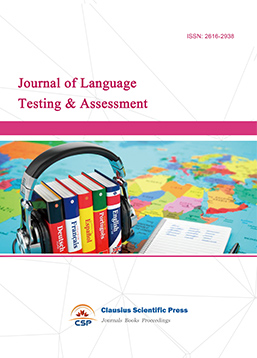
-
Military and Armament Science
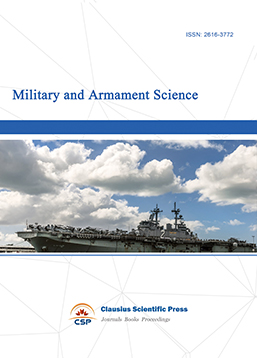
-
Media and Communication Research
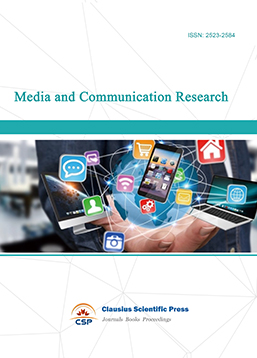
-
Journal of Human Movement Science
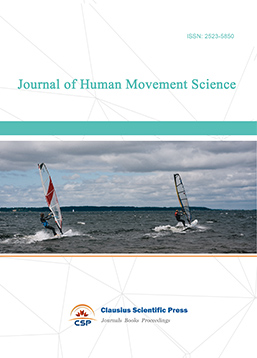
-
Art and Performance Letters
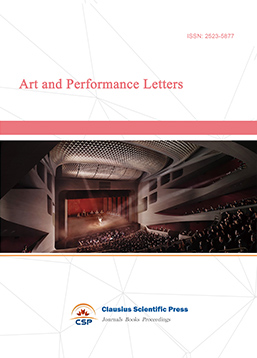
-
Lecture Notes on History
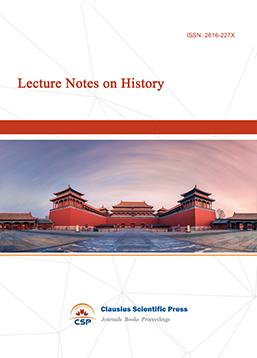
-
Lecture Notes on Language and Literature

-
Philosophy Journal
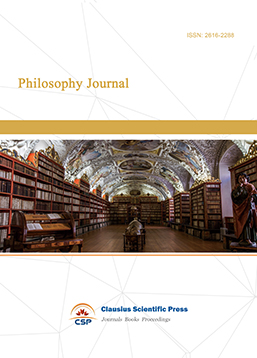
-
Science of Law Journal
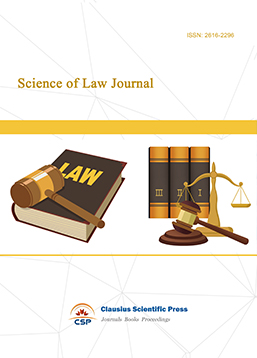
-
Journal of Political Science Research
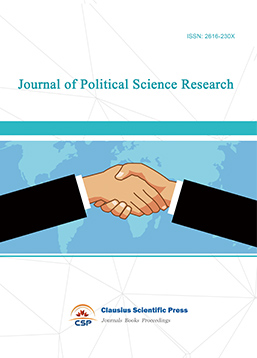
-
Journal of Sociology and Ethnology
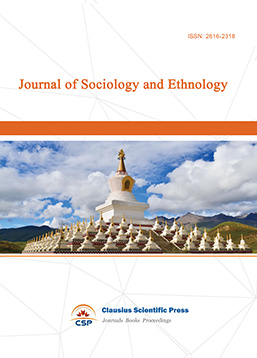
-
Advances in Broadcasting


 Download as PDF
Download as PDF